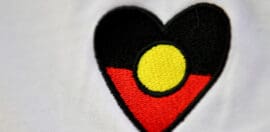Progress made on closing the vision gap for Indigenous Australians

12 August 2019 at 4:33 pm
Australia has made strong progress closing the eye health and vision gap for Aboriginal and Torres Strait Islander people but there is still a long way to go, new research shows.
The Australian Institute of Health and Welfare’s (AIHW) Indigenous eye health measures report found the rate of active trachoma in at-risk children fell from 14 per cent in 2009 to 3.8 per cent in 2017.
The report also found the proportion of Indigenous Australians who had an eye examination in the previous year increased from 13 per cent in 2007–08 to 16 per cent in 2017–18.
Professor Hugh Taylor AC, the founder of Indigenous Eye Health at Melbourne University, said it was great to have government reviewed data measuring progress in this area.
“We know there are many problems around closing the gap for Indigenous Australians and so many indicators that are failing to meet their targets, but for eye health, we are actually making some really good progress,” Taylor told Pro Bono News.
The report noted that Indigenous Australians suffered from vision loss at 2.8 times the rate of non-Indigenous Australians.
Taylor said this showed the blindness rate had halved, with Indigenous Australians previously being six times more likely to suffer vision loss.
“It’s still totally unacceptable and there’s more work to be done, but these are good signs,” he said.
“To take the next step, we need funding for a national eye health survey to be completed by 2020. This way we can actually show the progress since the last survey in 2015.”
Taylor added that it was also important to follow the Strong Eyes, Strong Communities plan, which sets a five-year vision for Aboriginal and Torres Strait Islander eye health up until 2024.
This thought was echoed by Vision 2020 Australia CEO Judith Abbott, who said the plan offered a practical set of actions to end avoidable blindness in Aboriginal and Torres Strait Islander communities.
These actions include increasing the availability of subsidised glasses across all states and territories and improving access to publicly-funded cataract surgery.
She said the AIHW report only highlighted how vital it was for strong action to be taken on Indigenous eye health.
“[AIHW’s] report shows that progress continues to be made to close the eye health and vision gap for Aboriginal and Torres Strait Islander people, which reflects the hard work and commitment of many working in this important area,” Abbott said.
“However, too many Aboriginal and Torres Strait Islander people still experience vision loss that could be avoided through better access to eye testing, affordable glasses and timely treatment.”







